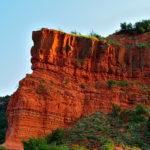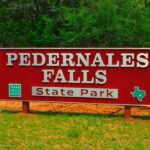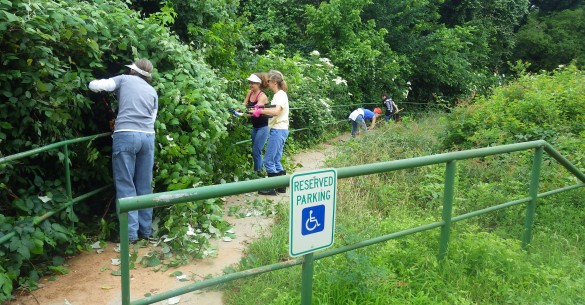The Lost Pines chapter serves primarily Bastrop and Caldwell counties of Central Texas (click here to find a statewide list of chapters). These counties are predominantly in the Post Oak Savannah and Blackland Prairie Ecoregions. In addition, our area includes the unique “island forest” of the Lost Pines, the westernmost extent of the loblolly pine (Pinus taeda), separated by about 100 miles from the pine forests of East Texas. Species in the Lost Pines are particularly adapted to the drier conditions here, and provide unique habitat for varied flora and fauna that can be seen in Bastrop and Buescher state parks and other nearby natural areas. You can learn more about what makes these parks so special and see pictures of them by visiting our “State Parks & Natural Areas” page; you can also find many links to information about the native plants, animals and ecology of the Lost Pines region on our resources page.
- The Lost Pines Chapter is turning 25!
 We are thrilled to invite current and former chapter members plus a guest to join us in celebrating a special milestone — the 25th Anniversary of the Lost Pines Chapter of the Texas Master Naturalist program! Yes — it’s been twenty-five years since our Chapter began, and we can’t wait to mark this moment with food, fun, stories, and… Read More →
We are thrilled to invite current and former chapter members plus a guest to join us in celebrating a special milestone — the 25th Anniversary of the Lost Pines Chapter of the Texas Master Naturalist program! Yes — it’s been twenty-five years since our Chapter began, and we can’t wait to mark this moment with food, fun, stories, and… Read More → - The Wonder of It AllSometimes we have to clear a space so something else can take its place. I have written monthlyarticles for this blog since 2011. Writing seems an anachronism—an ancient form ofcommunication seldom used by flesh and blood people in today’s text-messaging society. Whilemost might find writing to be drudgery, I have been delighted to sit down… Read More →
- Bob Bryant Pollinator Prairie
 The demonstration plots are underway at Bob Bryant Pollinator Prairie, our grant project in partnership with Pollinators for Texas! Huge thanks to our Bridge Maniacs and Habitat Focus team for all their hard work. Please click to follow our progress at the project website: Bob Bryant Pollinator Prairie
The demonstration plots are underway at Bob Bryant Pollinator Prairie, our grant project in partnership with Pollinators for Texas! Huge thanks to our Bridge Maniacs and Habitat Focus team for all their hard work. Please click to follow our progress at the project website: Bob Bryant Pollinator Prairie - Back Roads Nature–Martin Dies, Jr. State Park
 There is Texas timberland—tall, dark and imposing—which evokes visions of the gothic fairytale forests of feudal Europe. Romantics might look around fully expecting a medieval knight astride his charger to come crashing out of the tree line. Situated between the Angelina National Forest to the north and the Big Thicket National Preserve to the south,… Read More →
There is Texas timberland—tall, dark and imposing—which evokes visions of the gothic fairytale forests of feudal Europe. Romantics might look around fully expecting a medieval knight astride his charger to come crashing out of the tree line. Situated between the Angelina National Forest to the north and the Big Thicket National Preserve to the south,… Read More → - High Wire Balancing Act
 A Crow Indian legend tells the story about evil spirits that possess a man who tries to do away with a rightful heir by shoving the youth off a cliff. The young man lands in a patch of cedar trees and is rescued by seven bighorn sheep led by the chief of the bighorns, Big… Read More →
A Crow Indian legend tells the story about evil spirits that possess a man who tries to do away with a rightful heir by shoving the youth off a cliff. The young man lands in a patch of cedar trees and is rescued by seven bighorn sheep led by the chief of the bighorns, Big… Read More → - Back Roads Nature–Pedernales Falls State Park
 In big cities back East, they have a hard time imagining how devastating and destructive flash floods can be. I doubt there’s ever been a flash flood down 5th Avenue in New York City. But despite widespread urban phobia about flash floods, Texans flock to one of the most flash flood prone areas in the… Read More →
In big cities back East, they have a hard time imagining how devastating and destructive flash floods can be. I doubt there’s ever been a flash flood down 5th Avenue in New York City. But despite widespread urban phobia about flash floods, Texans flock to one of the most flash flood prone areas in the… Read More →




